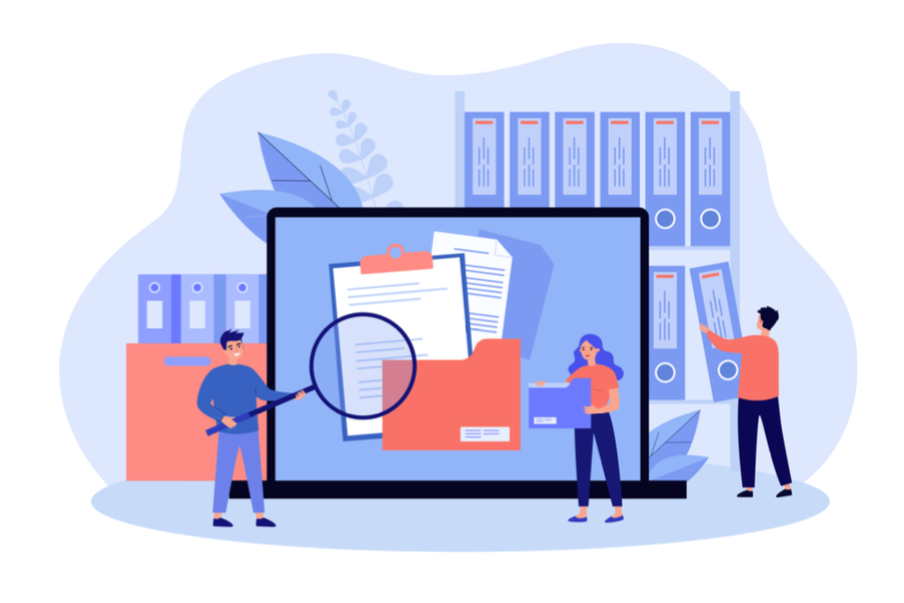
What is RGAA
The RGAA (General Accessibility Framework for Administrations), the French Disability Act, seeks to validate the accessibility of information and applications provided digitally.
In its present form, it directs administrative authorities to adopt and implement best practices that ensure the accessibility of these Web resources to all publics, regardless of physical or mental ability. To that end, it offers a technological reference for verifying standard compliance and measuring Web content conformance with international standards.
If individuals with disabilities and the elderly cannot use the Internet and Web resources, this adds another layer of exclusion that may intensify a disability or a vulnerable position.
The RGAA’s goal is to complement accessibility methods. Specific technical requirements must run appropriate tests and fulfill the necessary recommendations. Depending on the project, the accessibility goals, and the various stages of the project, the RGAA should act as a reference by addressing accessibility-related issues that occur in multiple situations.
France wanted to reference several rules and standards and offer a set of tests to guarantee conformity and to enhance the accessibility of online services. The RGAA meets this goal. It is based on Article 47 of the Law No 2005-102 of February 11, 20054 for equal rights and opportunity, participation, and citizenship of persons with disabilities.
RGAA can only develop online accessibility through a voluntary approach, by each public communication service.
It is based on:
- self-assessment process (or third-party evaluation, depending on the available capabilities) and
- project-specific accessibility strategy (creating new Web content, redesigning an existing site, continuous improvement, sampling).
How does RGAA protect people with disabilities?
Over the last several years, there has been an increase in legislative and regulatory action on the problem of digital accessibility across the world.
Most recently, the French government enacted new legislation and accompanying technical order (the General Accessibility Reference for Administrations, or RGAA). Imposing a wide range of accessibility requirements on companies in France with annual revenues of more than €250 million (as averaged over the prior three years).
The RGAA compels covered companies to make accessible to persons with disabilities websites, mobile applications, and other online services.
These online services must specifically adhere to:
- Web Content Accessibility Guidelines
- Levels A and AA
- EN 301 549
Disability affects more than 12 million French people. The ‘Référentiel Générale d’Accessibilité pour les Administrations’ (RGAA 3), is the accreditation standard for public web sites in France. It specifies the method and criteria for determining if a website is accessible.
The WCAG 2.0 standards serve as the foundation for RGAA 3.
How is RGAA 3 changing?
Firstly, in 2005 in France, Article 47 for persons with disabilities equal rights and opportunities, participation, and citizenship was enacted.
Secondly, from 2011, the RGAA2 required public research, municipalities, services, and the French central government websites to be accessible.
Thirdly, in April 2015, RGAA was upgraded to Version 2.2, including new technologies: Accessible Rich Internet Applications (ARIA) and HTML5.
The RGAA’s version 3.0 includes changes to the methodology used to assess compliance. It also contains technical improvements that take HTML evolution into account.
RGAA & Web Accessibility
In the digital age, there is also a lack of accessibility. The design of user interfaces often provides the chance to identify accessibility gaps. Particularly, in the absence of alternative methods to compensate for different visual, aural, motor, or cognitive limitations. Web material is especially problematic since it depends on various distribution methods (text, audio, video).
To enhance accessibility, it is essential to consider all disabilities. Measures and standards to promote accessibility must be put in place. And, when appropriate, provide alternate options that give the same level of information and comparable capabilities to the whole population.
It is not a question of creating particular technological solutions. Instead, allowing everyone to access the same information, independent of how the service’s users utilize a computer. Examples may include keyboard only – without a mouse -, with specific tools and technologies such as virtual keyboards, screen readers coupled with a Braille display, etc.
We should point out that the RGAA Act, aims to enable people with disabilities with access to “any information in digital form,” which necessitates compliance with international guidelines. Because international guidelines are not particularly practical, they are challenging to apply immediately. As a result, the State has provided the RGAA with a technological reference system that ensures the proper implementation of international norms.
The RGAA is a live document that needs regular revising since it focuses on ever-changing technology. The Companion Document under RGAA assists administrative authorities in making strategic and technical decisions. This is achieved by providing a technical reference system that includes a detailed list of accessibility criteria and tests.
Consequences of Noncompliance
The Consequences of Noncompliance: An disgruntled user may seek compensation from the court or mediation from the Rights Defender, depending on the extent of the harm sustained.
For instance, the Minister for ‘Persons with Disabilities’ will publicize the name of such service as a non-conforming communication service within six months after a demand made by the competent authority, unless previously rectified.
Because of the lack of accessibility that best emphasizes the idea and interest toward accessibility.
When an online program, service, or communication is implemented, if it is not accessible, it will result in uneven treatment of people who can and cannot use it.
Service providers should comply with a variety of additional testing, notification, training, and documentation requirements.
It is intended for administrative authorities’ directorates and project management offices working in organizations and information systems.
The RGAA aims to equip managers of public communication services with the tools to adopt an accessible strategy. Also, to create a new online service under the best possible circumstances. As a consequence, tender requirements must contain a need for digital accessibility. RGAA suggests that the departments involved are provided with the appropriate resources.
How to avoid lawsuits due to inaccessible websites?
Identification of the example pages: this option is influenced by local choices, and therefore by the accessibility policy established.
Report creation in an informed audit grid and/or a more or less comprehensive report, depending on the needs.
The RGAA 2.2 tests may have one of three audit statuses: compliant, non-conforming, or not relevant.
Every institution obliges to take the necessary steps to offer information access to people with disabilities in a reasonable amount of time.
A disabled person is entitled to compensation for the effects of their impairment, regardless of the cause and type of their disability, age, or lifestyle.
Here are some ways to enhance accessibility for people with disabilities:
- Alt Text for images
- Captions for videos
- Screen magnifiers
- There must be keyboard-only alternatives accessible
- Adjustment of text size and color
- Color contrasts must be adjustable
Service providers may use the relevant Platforms and Checkers to conduct accessibility checks to verify the legislative usage of these products.
Accessibility Platforms and Checkers will go through any online material to verify that every single page is completely accessible for all types of impairments.
Therefore, these applications will then either correct the errors or provide recommendations. Those who do not have automated remediation will have to repair it manually.
Conclusion
RGAA represents an essential milestone in EU web accessibility politics. With the RGAA in effect, W3C, the nonprofit organization that ensures making the web accessible for all, acquired yet another strong ally in the journey to equality. People with disabilities have yet a long way to go but establishing stricter guidelines for what is to consider discriminatory.
If you enjoyed our article continue with our next one:













